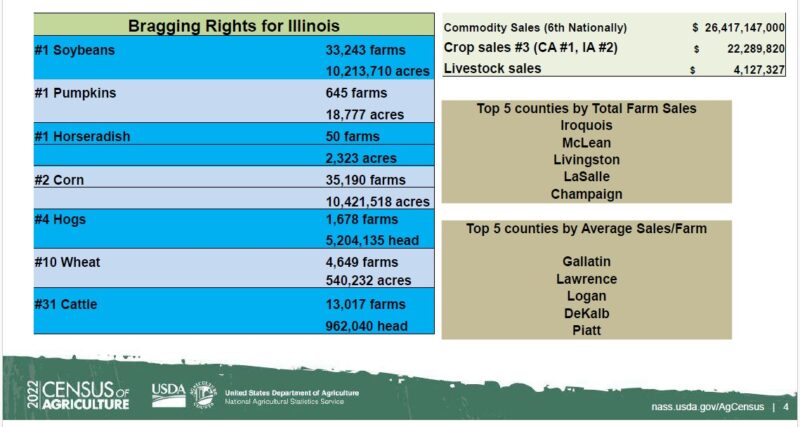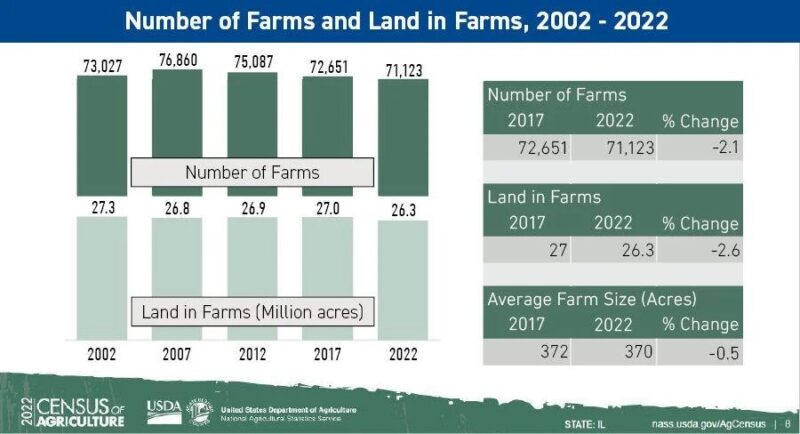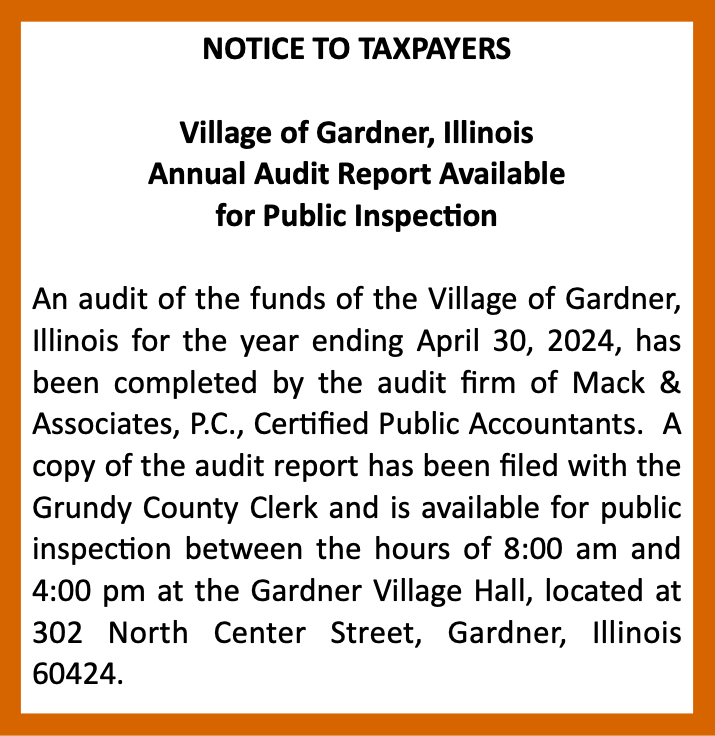Vilsack: Ag census serves as a ‘wake-up call’
By TAMMIE SLOUP
FarmWeek
The number of farms and farmland in the U.S. continues to fall, as the average age of farmers ticks higher.
USDA’s 2022 Census of Agriculture released Feb. 13 serves as a “wake-up call” to policymakers, said USDA Secretary Tom Vilsack, noting the number of farms plummeted by 142,000 from 2017 to 2022, and the country lost 20 million acres of farmland during that same period.
“This survey is essentially asking the critical question of whether as a country, are we OK with losing that many farms? And are we OK with losing that much farmland?” Vilsack said during a news conference.
“Or is there a better way?”
Nationally, there were 1.9 million farms and ranches (down 7% from 2017) with an average size of 463 acres (up 5%) on 880 million acres of farmland (down 2%). That is 39% of all U.S. land.
The data-rich report, produced by USDA’s National Agricultural Statistics Service, spans more than 6 million data points about America’s farms and ranches and the people who operate them down to the county level. The census dates back to 1840 and is conducted every five years to help tell agriculture’s story and provide valuable data for policymakers.
**Editor’s Note: If you find the story here of value, consider clicking one of the Google ads embedded in the story. It costs you nothing but Google will give the website owner a few cents. This is a way to help support local news at no cost to the reader.

American Farm Bureau Federation President Zippy Duvall said the new census data shows an alarming loss of family farms.
“The latest census numbers put in black and white the warnings our members have been expressing for years,” Duvall said. “Increased regulations, rising supply costs, lack of available labor and weather disasters have all squeezed farmers to the point that many of them find it impossible to remain economically sustainable.
“Family farms not only help drive the economy, they allow the rest of the nation the freedom to pursue their dreams without worrying about whether there will be enough food in their pantries. We urge Congress to heed the warning signs of these latest numbers. Passing a new farm bill that addresses these challenges is the best way to help create an environment that attracts new farmers and enables families to pass their farms to the next generation.”
The data also contained bright spots, including a rise in the number of new and beginning (operating 10 or fewer years on any farm) as well as young (under the age of 35) farmers.
Young farmers made up 9% of all producers, with the 221,233 farms with young farmers making decisions tending to be larger than average in both acres and sales.
In fact, 33% of all farms in 2022 had a new or beginning producer, NASS Statistician Virginia Harris highlighted during a presentation during USDA’s Ag Outlook Forum on Feb. 15.

Vilsack said young and beginning farmers have an opportunity to help create a different industry model that not only acknowledges the importance of production agriculture and the significant investments in large farm operations, but one that also sends a message of hope and opportunity to smaller and midsize operators by giving them multiple sources of revenue and not requiring those operators to also work off-the farm jobs to survive. USDA has been striving to do this with several climate-smart programs and initiatives to help develop diverse market opportunities, he said.
While the number of producers between the ages of 35 and 64 declined 9%, the number of producers 65 and over increased 12% outpacing the 3.9% increase of young farmers. However, more than 1 million beginning producers were counted in the 2022 ag census.
Illinois also is in line with a decrease in farms and farmland, as well as an aging farmer demographic. The number of farms decreased 2.1% to 71,123 (the fifth highest number of farms in the U.S.), with farmland acres falling from 27 million to 26.29 million. The average age of an Illinois farmer rose to 58.6, slightly higher than the national average of 58.1.
Of the 121,342 Illinois farmers, 10,632 are under the age of 35, and 32,538 are new and beginning farmers — an increase from 2017 of 11%.
New census questions dealt with hemp, precision agriculture and internet access. Farms with internet access continued to rise from 75% in 2017 to 79% in 2022. In Illinois, farms with internet access increased slightly from 77% of all farms to 79%.
The census also concluded:
**Editor’s Note: If you find the story here of value, consider clicking one of the Google ads embedded in the story. It costs you nothing but Google will give the website owner a few cents. This is a way to help support local news at no cost to the reader.
- Family-owned and operated farms accounted for 95% of all U.S. farms and operated 84% of land in farms.
- U.S. farms and ranches produced $543 billion in agricultural products, up from $389 billion in 2017. With farm production expenses of $424 billion, U.S. farms had net cash income of $152 billion. Average farm income rose to $79,790. A total of 43% of farms had positive net cash farm income in 2022.
- The total value of crops in 2022 was $281 billion, up 45% from 2017. For livestock, the value was $262 billion, up 35%.
- A total of 153,101 farms and ranches used renewable energy producing systems compared to 133,176 farms in 2017, a 15% increase. The majority of farms (76%) with renewable energy systems reported using solar panels.
- In 2022, 116,617 farms sold products directly to consumers, with sales of $3.3 billion. Value of sales increased 16% from 2017.
- The 105,384 farms with sales of $1 million or more were 6% of U.S. farms and 31% of farmland; they sold more than three-fourths of all agricultural products. The 1.4 million farms with sales of $50,000 or less accounted for 74% of farms, 25% of farmland, and 2% of sales.
- Nearly three-fourths of farmland was used by farms specializing in two commodity categories: oilseed and grain production (32%) and beef cattle production (40%).
- In 2022, 1.2 million female farmers accounted for 36% of all producers. Fifty-eight percent of all farms had at least one female decision maker.
The response rate for the 2022 ag census was 61%; Illinois’ response rate was 67.5%. To read the ag census, visit: nass.usda.gov/AgCensus/.
This story was distributed through a cooperative project between Illinois Farm Bureau and the Illinois Press Association. For more food and farming news, visit FarmWeekNow.com.
**Editor’s Note: If you find the story here of value, consider clicking one of the Google ads embedded in the story. It costs you nothing but Google will give the website owner a few cents. This is a way to help support local news at no cost to the reader.











































